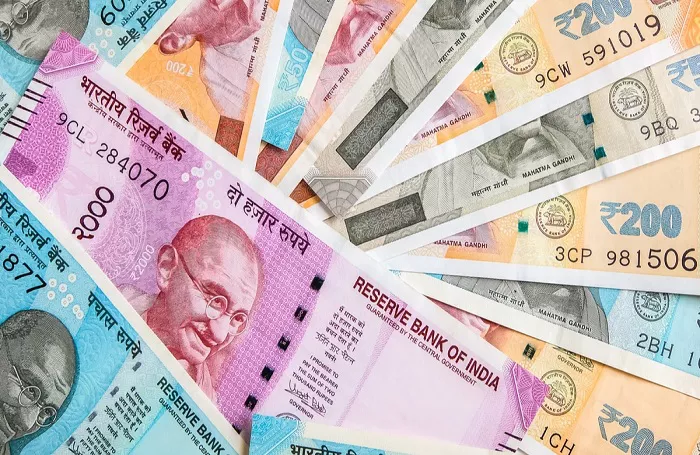In the early European trading session on Tuesday, the Indian Rupee (INR) faced downward pressure against the US Dollar (USD), with the USD/INR exchange rate edging higher.
Global Trade Concerns Fuel USD Strength
This came as concerns over a potential global trade war, sparked by President Donald Trump’s impending tariff announcements, loomed large over the financial markets. The anticipation of US trade tariffs, set to be unveiled on Wednesday, has made traders increasingly risk – averse. This risk – off sentiment has led to a surge in demand for the US Dollar, a traditional safe – haven asset, which in turn has put the Indian Rupee under strain.
Adding to the Rupee’s woes is the recent increase in crude oil prices. As the world’s third – largest oil consumer, India is highly vulnerable to fluctuations in oil prices. Higher oil prices mean increased import costs, which can widen the trade deficit and further weaken the Rupee.
Domestic Factors Offer Some Support
However, there are some factors that could potentially limit the Rupee’s losses. Domestic inflation in India has been easing, which is a positive sign for the currency. Additionally, the resumption of foreign inflows into Indian stocks and bonds has provided some support. Foreign investment can boost the demand for the Rupee, thereby stabilizing its value.
US PMI Data in Focus
Market participants are now closely eyeing the release of the US March ISM Manufacturing Purchasing Managers Index (PMI) data later on Tuesday. This data is expected to provide crucial insights into the health of the US manufacturing sector. A stronger – than – expected reading could potentially strengthen the US Dollar further, while a weak reading might temper the greenback’s rally.
Alongside the ISM Manufacturing PMI, other important economic data such as the JOLTS Job Openings and the final S&P Global Manufacturing PMI are also set to be published, which will add to the market volatility.
Economic Outlook and Technical Analysis
Despite India’s robust economic growth prospects, with the National Statistical Office (NSO) and EY Economy Watch both forecasting a 6.5% growth rate in the fiscal year 2025 – 26, the Rupee remains under pressure in the short term. President Trump’s statement on Monday, indicating that his reciprocal tariffs plan will target all other countries, has added an extra layer of uncertainty to the global trade landscape just days before the policy’s implementation.
From a technical perspective, the USD/INR pair is in a bearish trend on the daily timeframe, with the price trading below the key 100 – day Exponential Moving Average (EMA). The Relative Strength Index (RSI) is also below the midline, suggesting a downward momentum. However, the oversold condition of the RSI indicates that the pair may experience some consolidation or a temporary recovery before any further depreciation in the near term.
The 85.00 psychological mark serves as the initial support level for the USD/INR pair. If this level is breached, the pair could potentially drop to 84.84, the December 19 low, and then to 84.22, the November 25, 2024 low. On the upside, the 85.90 – 86.00 region, which represents the 100 – day EMA and a round number, acts as a crucial resistance level. A sustained move above this level could open the door for the pair to reach 86.48, the February 21 low, and potentially even 87.00.
Factors Influencing the Indian Rupee
Understanding the factors that drive the Indian Rupee is essential for investors. The Rupee’s value is significantly influenced by external factors such as the price of crude oil, the strength of the US Dollar, and the level of foreign investment. The Reserve Bank of India (RBI) also plays a vital role. The RBI intervenes in the foreign exchange markets to maintain a stable exchange rate and adjusts interest rates to keep inflation in check. Higher interest rates can attract foreign investors through the ‘carry trade’, strengthening the Rupee.
Macroeconomic factors like inflation, interest rates, GDP growth, the balance of trade, and foreign investment inflows all impact the Rupee’s value. A higher economic growth rate can attract more foreign investment, increasing the demand for the Rupee. A more favorable balance of trade can also lead to a stronger Rupee. On the other hand, higher inflation can be a double – edged sword. While it may prompt the RBI to raise interest rates, which could be positive for the Rupee, it also increases the cost of exports and reflects currency devaluation through oversupply.
Related Topics:
USD/INR Softens as Indian PMI Releases Loom
USD/INR Gains Momentum Amid Anticipation of Fed Rate Decision


